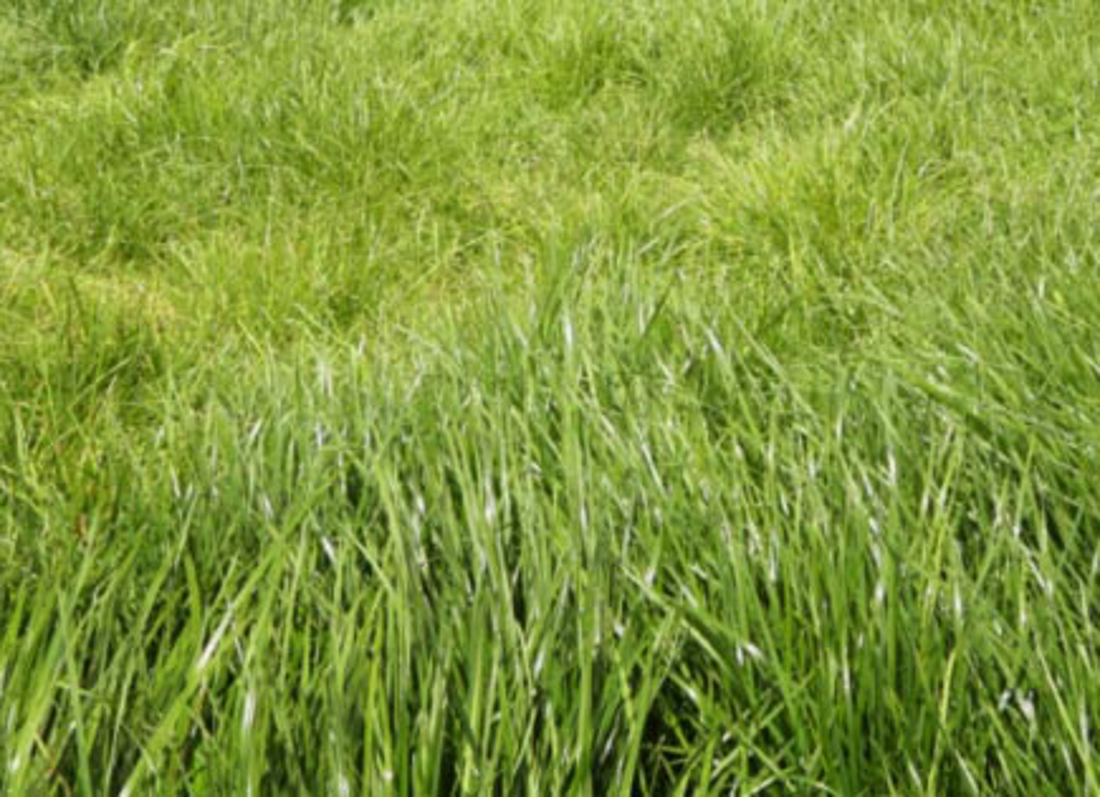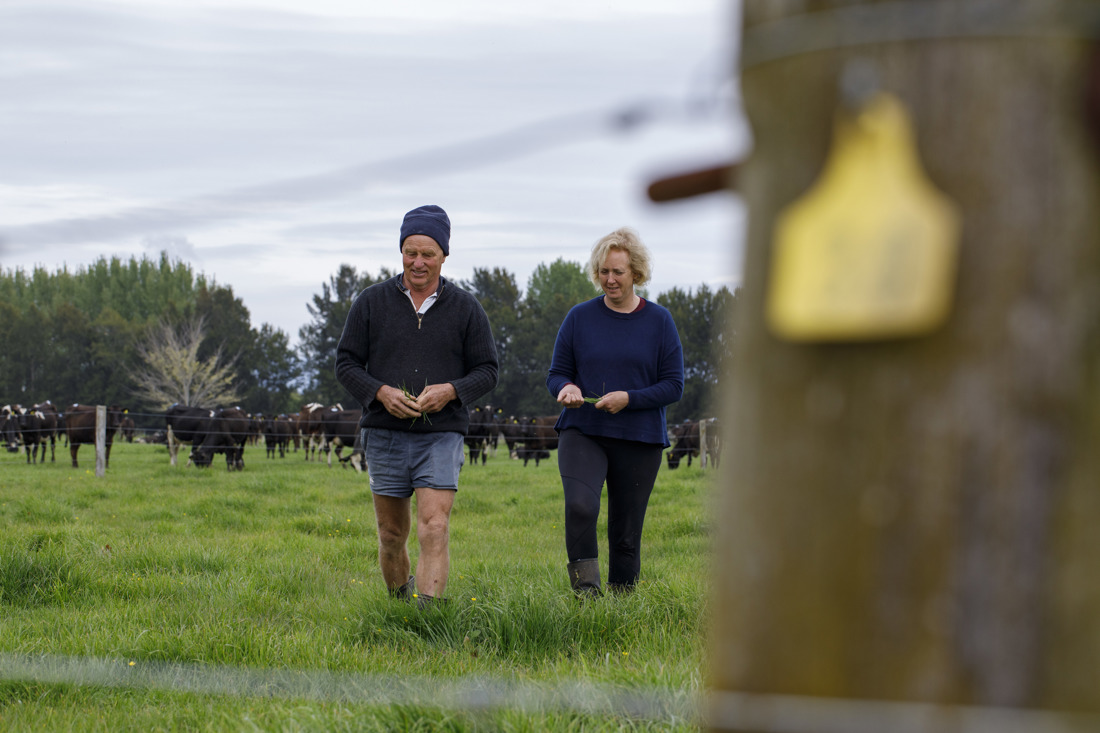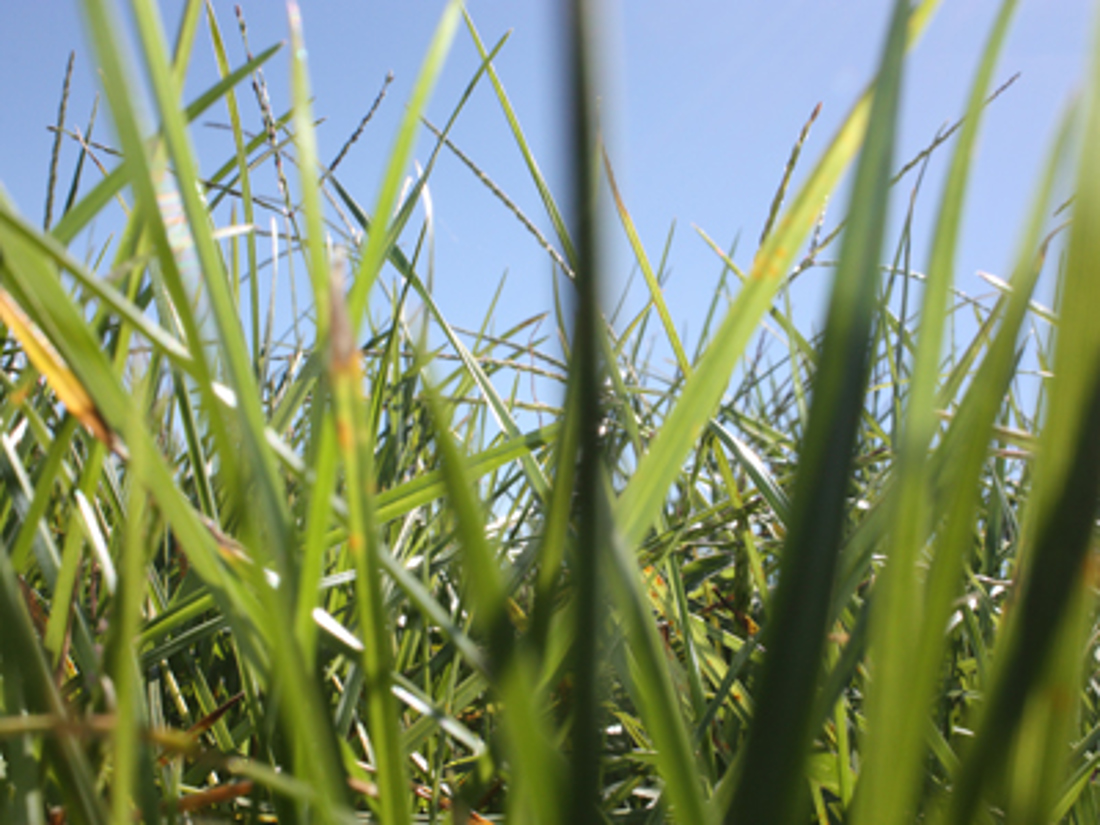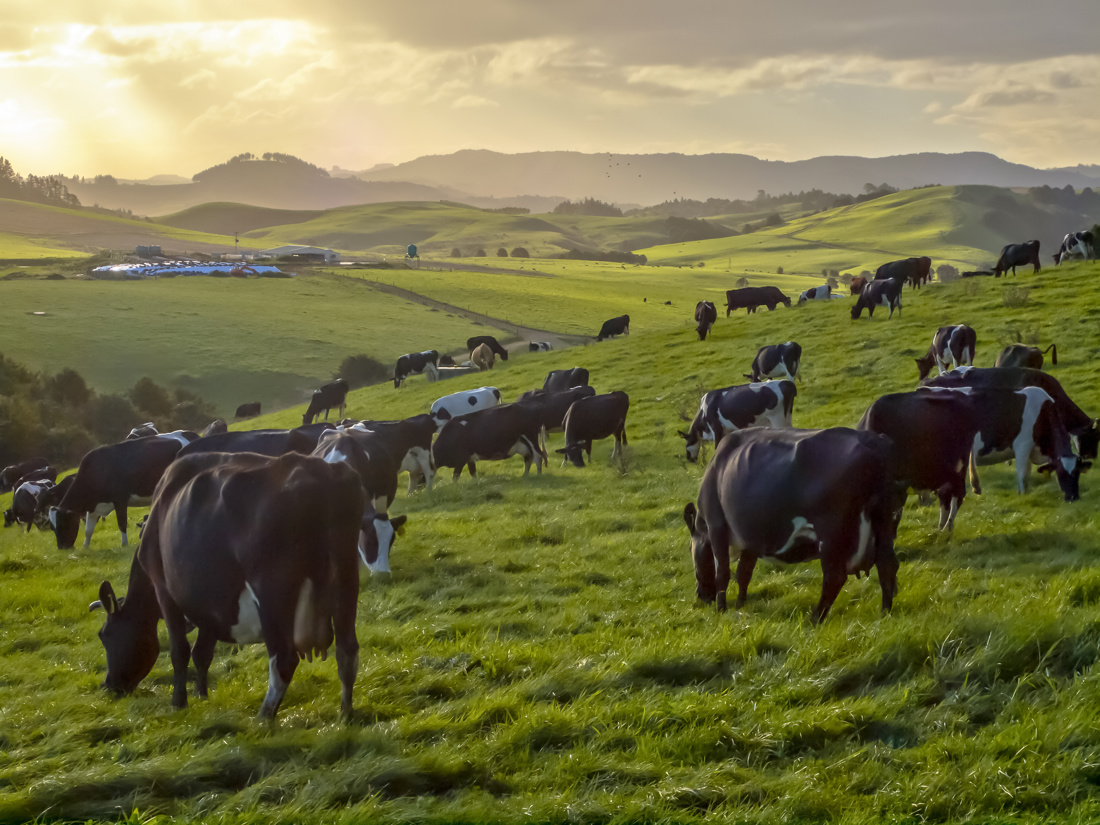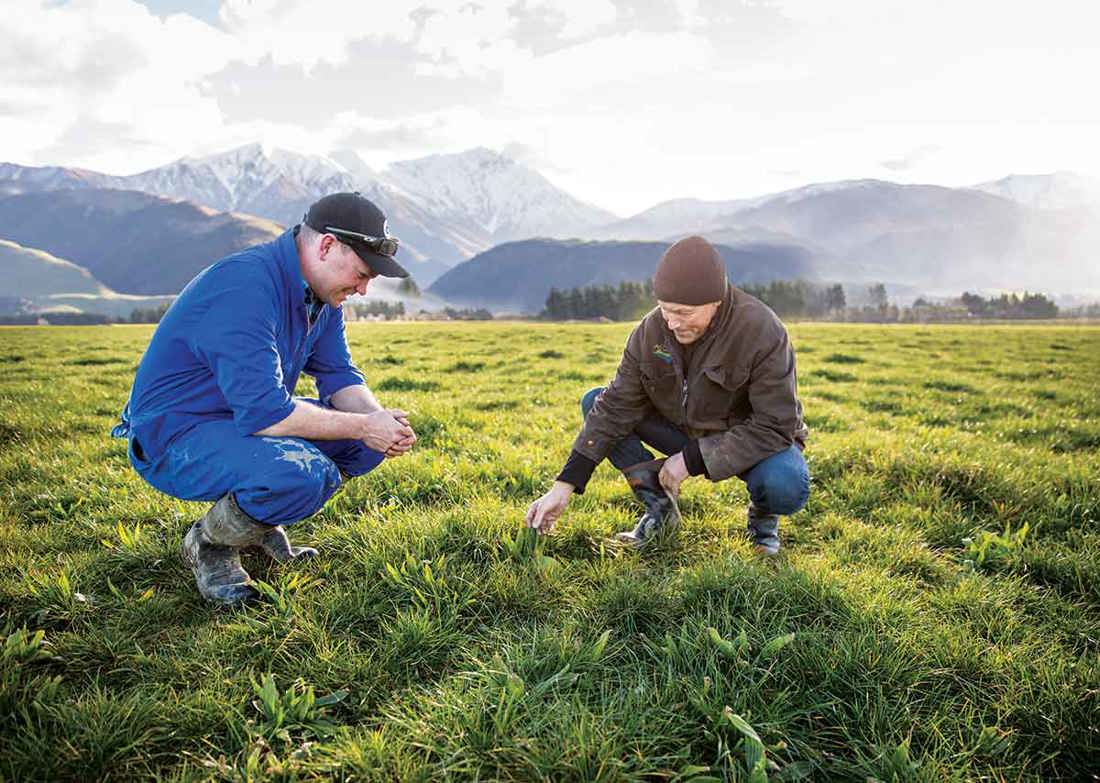Deferred grazing is a pasture management tool used to manage pasture quality, transfer spring feed to summer without machinery and rejuvenate ryegrass pastures through natural re-seeding. It reduces costs required for silage harvesting, crop establishment and re-grassing.
Flexibility is the key as it’s not always possible to predict exactly when summer feed deficits will occur. There are several options for deferred grazing.
Long deferral - Surplus pasture is not grazed for 110-120 days. This allows for ryegrass and white clover “seed drop” to occur. Seed drop increases ryegrass and white clover populations in the recovery after grazing.
Short deferral - Rolling surplus pasture forward into summer as high feed cover without seed drop. Grazing between 50-60 days after last grazing if a feed deficit occurs before seed drop. .
A long deferral (100+ days) is first choice as it provides the pasture renovation effect from seed drop. The other options only provide flexibility for managing surplus grass at low cost.
The renovation effect will appeal to farmers, particularly in the Upper North Island, that are struggling to maintain perennial ryegrass tiller density. In those regions, grazing pressure combined with drier and hotter summers and insect pressure, is placing the ryegrass plant under greater stress during late spring and summer, reducing ryegrass persistence.
Closing up paddocks and rotation length
As spring progresses it becomes increasingly difficult to make high quality silage of greater than 10 MJME/kg DM. The drop in quality from deferring pasture during November instead of making silage is reduced as is the cost. November silage costs more per ME.
Knowing the last possible grazing date is crucial for success. The recommended deferred period is ~110 days, with last grazing occurring from early to late October and reopening from mid-January to mid-February too allow the later heading cultivars of ryegrass to drop seed.
Some knowledge for of the heading date of your ryegrass in the deferred paddock is important, each cultivar has a different heading date relative to Nui (the standard ryegrass) heading at day 0); 22nd October. A cultivars heading date indicates the time in spring when 50% of plants have emerged seed heads.
- Early and Mid-heading cultivars – last grazing in early to mid-October.
- Late-heading cultivars – last grazing no later than late October
Evidence from DairyNZ’s trial suggests that attempting to defer tetraploid cultivars of ryegrass is not as successful as deferring diploid cultivars.
An alternative practice to under-sowing less productive pastures is long deferral. It is a low-cost method of increasing pasture density by not grazing a paddock from spring through to mid-summer and allowing existing ryegrass plants to reproduce via seed drop.
To benefit from long deferral plants must drop their seeds. Grazing before the seed drop could result in no rejuvenation of the pasture, as the plants as have neither been able to produce viable seed, nor daughter tillers.
How to achieve deferred grazing
- Identify poor-performing or run-out pastures which may have large areas of bare unproductive ground. See the pasture condition score tool.
- Selected paddocks will need more than 20% of the plant population as a high ryegrass plant population to be successful. If you are concerned by the lack of plants or high weed population, there are other alternatives to pasture renewal which may be more successful.
- Control weeds for a cleaner pasture later on. Consider using herbicides.
- Ensure the last grazing residual is around 1500kg DM/ha.
- Last grazing is in line with the cultivars heading date. The decision not to graze a paddock again could be in mid- November if the most recent grazing was after October 20th.
- Leave paddocks ungrazed for ~110 days.
- Graze once you visually notice seeds have dropped on the soil surface.
- Monitor and manage these pastures through autumn and winter like you would an under-sown pasture to ensure tillers are looked after and not damaged.
Grazing Management
Allow the herd access to a slightly bigger break to start with, for approx. 2 days so the cows can get used to the tight space allocation. You can allow some back grazing.
Once the cows have been introduced to the deferred pasture, an area allocation of about 10 m2per cow per day will provide about 4.5 kg DM/cow/day or about 20- 25% of the cows daily feed requirements.
Once the paddock has been grazed allow time for germination of seed to occur and the new tillers to establish before grazing. This could take 4-8 weeks depending on rainfall events. Before grazing the newly germinated pasture, check that 30-40% of new ryegrass plants pass the pluck test.
Deferred Grazing Research
In a trial at Scott Farm the deferred pasture cover at re-opening was 6.8 t DM/ha (above 5 cm) with a quality of 7.5 MJ ME/kgDM The deferred paddocks at Scott Farm have outperformed similar non-deferred paddocks during subsequent years suggesting a large benefit in ryegrass performance after self-seeding, supported by previous findings of increased ryegrass tiller density following deferral in Taranaki (McCallum et al., 1991). The Taranaki study identified no detrimental milk production or animal effects of deferred grazing, with increased autumn pasture yields after paddocks re-joined the grazing rotation (McCallum et al., 1991). In the Bay of Plenty and Waikato, deferred grazing was identified as a successful strategy to maintain clover content in dairy pastures over summer (Watson et al., 1995; Harris et al., 1998).
Advice from farmers utilising deferred grazing and from a Taranaki research farm include limiting the deferred area to not exceed 10% of the farm. While the time input required to feed the deferred area in summer is similar to that of a summer crop, there are foreseen time and cost savings in reduced pasture conservation and re-grassing as well as benefits for ryegrass and clover resilience.
Key benefits of long deferral, as found through a Dairy NZ research trial concluded in 2022:
1. Increased DM yield of pasture in years following
The long deferral method increased perennial ryegrass dry matter (DM) yield by up to 2.2 t DM/ha (compared to the undersowing treatment) in the year following deferral compared to a normally managed perennial ryegrass pasture. A yield advantage of 1.5 t DM/ha was maintained at 3-years post-deferral.
Reseeding benefit - comparison of ryegrass yield over the following 4 years

2. Increased plant population
Ryegrass tiller numbers in the deferred plots doubled in the year following deferral compared with control plots. A gradual decline in plant numbers in the second and third years after long deferral shows the pasture self-thinning to reach a sustainable equilibrium of plant numbers. Three years after deferral the plots had approximately 1000 more tillers/ha than the control and under-sown plots.

3. Differences in quality of feed
In dry summer conditions there are minimal differences (minus 0.5 MJME/kg DM) in the feed quality when opening the deferred paddocks back up to grazing compared with un-deferred pastures also impacted by dry conditions. The quality of deferred grazing pasture can be low at around 8 MJME. It’s not unusual to have large clumps of clover dominant pastures appear in the deferred pasture. Cows will preferentially graze these areas.
Feed Quality

Facial Eczema
Facial eczema spore counts collected from a research trial and farmers implementing the practice during a dry summer has not indicated a FE risk. Nevertheless, it is recommended to follow normal preventative measures for FE.
Ian and Natalie - giving deferred grazing a go
Cambridge dairy farmers Ian and Natalie Butler were inspired to try pasture deferral last season after a visit to DairyNZ’s Scott Farm pasture persistence trial site. Has it been the game-changer they hoped it would be?
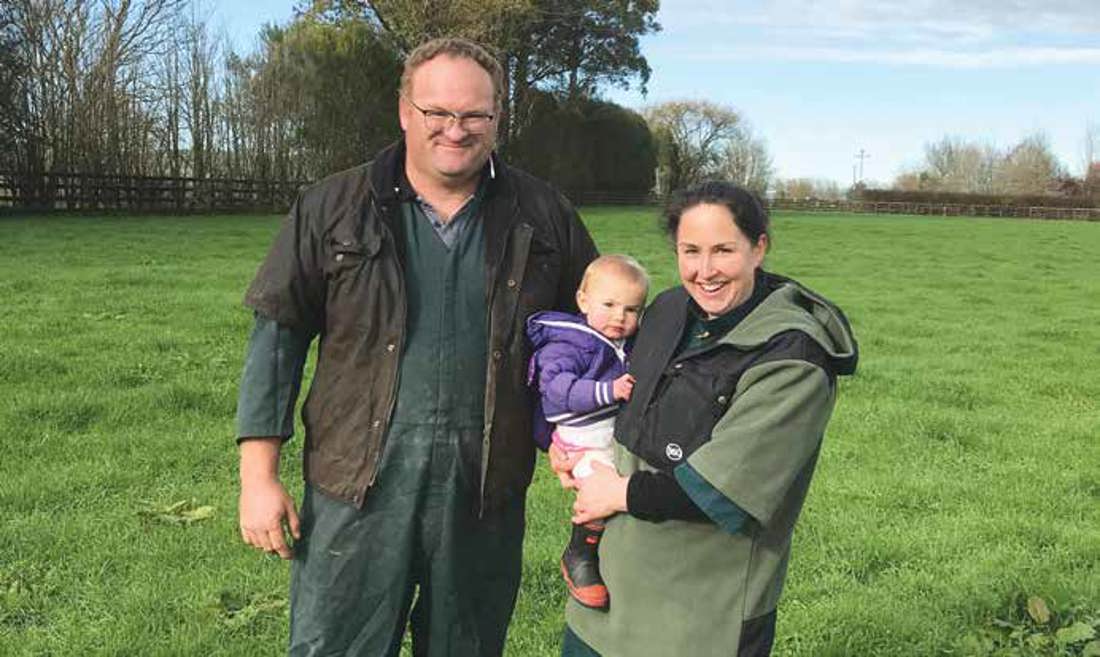
Deferring spring pasture seemed like a no-brainer for Ian and Natalie, seen here with daughter Eloisa on their farm in Leamington.
On most New Zealand dairy farms, conserving surplus spring pasture as silage is a routine practice to manage the feed balance. An alternative management practice is the deferral of spring pasture for grazing in-situ either side of Christmas.
A short deferral (40 to 60 days) helps carry feed over month-by-month, usually pre-Christmas. A longer deferral (up to 120 days) shifts feed into late summer and provides the additional opportunity to rejuvenate poorer-performing paddocks through reseeding.
Pasture deferral was tested at the Taranaki Agricultural Research Farm in the early 1990s, showing benefits for harvesting more milk from pasture at a lower cost.
Many dairy farmers, particularly in the upper North Island, report issues with low productivity of perennial ryegrass pastures.
A sharp decline in performance is seen after dry summers and increased pest infestation, leading to ryegrass tiller population crashes. What can farmers do to stop or slow down the decline?
In the spring of 2018, DairyNZ investigated management options for recovering ryegrass tiller populations in run-out pastures at Scott Farm, Waikato. One of the treatments we tested was a long (120-day) pasture deferral. A year on, the results of this treatment showed considerable promise for reestablishing ryegrass populations and ground cover.
When local sharemilker Ian Butler visited the trial, he was excited by the lush, newly reseeded pastures. “I left the trial site thinking, ‘We should try deferring pasture – that could be a game-changer for us’,” says Ian. Subsequently, he and wife Natalie decided to implement pasture deferral on their farm last season.
What motivated the Butlers?
Ian and Natalie don’t shy away from novel solutions. They’ve completed two seasons as variable order sharemilkers at Leamington, Cambridge.
Having shifted north from coastal Taranaki, they were well versed in the costs of growing crops as alternative summer supplementary feed. Deferring spring pasture and later grazing in-situ seemed a nobrainer, so they decided to put it to the test.
They wanted to use pasture deferral to:
- reduce farm working expenses of making and feeding out silage
- stitch up and boost productivity of poorer-performing paddocks and increase the ryegrass content, especially of the paddocks on the peat soils
- suppress weeds.
Putting it into practice
In early- to mid-October 2019, the Butlers closed 9.7ha after grazing. Many of the paddocks they selected were poor performers on peat soil, with a couple of paddocks (2.4ha) on a sandy soil. Several paddocks had high infestations of buttercup and/or willow weed.
DairyNZ recommends late October closing for late season heading cultivars, and early October closing for mid-season heading cultivars or when the heading date is unknown. This timing capitalises on the natural flowering behaviour of cultivars to maximise the viability and shedding of seed.
In late December, the couple decided to trial a shorterdeferral on 2ha. Not allowing the ryegrass plants to reach full maturity changes the physiological response within the plant; the carbohydrate store that’s begun to move from plant base towards the seed head is pushed back to the base. This signals the plant to invest in vegetative growth.
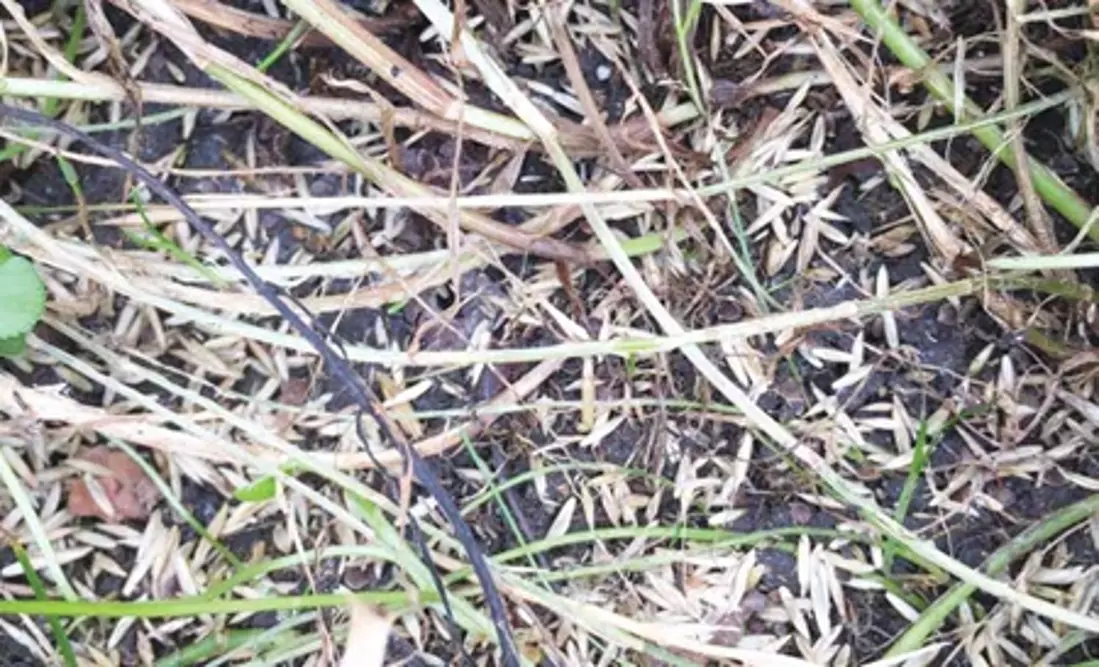
Seed drop, January 13th 2020.
Capturing these changes can lead to improved pasture performance through increased tillering, rather than through the new seedlings that come from a longer deferral.
The Butlers adopted a 55-day deferral. While the pasture comprised ryegrass stem (no seed head), the stem was still green and holding its quality. Fifty-five days is at the upper limit of a short deferral before changes in pasture quality begin to kick in.
Across three days, a herd of 200 cows, milked twice a day, grazed a daytime break after Ian pre-mowed to a height of 8cm to 10cm. Cows hoovered up the mown grass, and Ian noted production lifted by 500L/day across the three days, compared to the previous week’s production. Pre-mowing protected the base of the ryegrass plants, due to the residual stem barrier effect.
Ian commented in May 2020 that, for the remainder of the summer, his cows left 200 to 300kg DM/ha higher residuals, and the pasture growth rate in the 2ha paddock was noticeably stronger than in other paddocks. Ian noted that the short-deferral paddock was one of the greenest and most productive paddocks during summer.
At DairyNZ, we advise the pregraze mowing of short-deferral paddocks because the elevated cutting height of an elongating stem creates a barrier that cows don’t like to penetrate, and this helps protect the plant base (think of the spines on a hedgehog).
A Massey University trial in the late 1990s showed that, unless the plant base is protected from grazing, the cows’ preferential grazing behaviour will reduce the opportunity to capture the plant physiological response. This is critical to the successful production of new tillers.
The Butlers re-opened the first long-deferral paddock (120 days closed) in mid-January. Their decision to re-open paddocks and start grazing the feed in-situ was determined by stomping on ryegrass plants and checking that seed had either dislodged or would dislodge with cow traffic. Tall ryegrass plants tend to lodge after December (as seen on the DairyNZ plot trial the previous year), so it’s necessary to look into the base of the pasture and check for seed on the soil surface.
Ian and Natalie experimented with feeding levels in the first paddock. Cows preferentially grazed the clover. With no dry stock available to clean up, and not wanting to finish up with large amounts of wet, dead material on the surface should it rain, the Butlers reduced the 200-cow herd’s area to 0.2ha/ day.
This tightened up utilisation and put the herd on an approximately 60-day round. Moving to a long round at this time of year allowed the couple to stop feeding supplements for six weeks.
“A long pasture deferral pushed us out to a 60-day round in summer, eliminating the need for any supplementary feed while the deferred paddocks were being grazed. This was a huge simplification of our farm system,” says Ian.
Feed utilisation
The cows did a good job of clearing out the standing pasture. Ian and Natalie experimented with the effects of pregraze mowing, or mowing to tidy up, or no mowing, on feed utilisation. All have their benefits, and the couple summarise their learnings as follows:
- Pre-mowing improves utilisation, and is better for cow intake, but involves a commitment to daily mowing.
- Post-graze mowing tidies up the paddock, and:
- provides a mulch, retaining soil moisture duringa dry summer
- results in faster germination and growth of newryegrass seedlings.
- As cows become adjusted to grazing dry standing material, mowing becomes less of a prerequisite.
- Break shape and size are important to prevent cows escaping into the next break, even though what’s on offer is more of the same. Escapes were confined to the early stages of adapting to deferred pasture.
- Pre-graze mowing is essential for the first 10% of the paddock to provide bigger breaks and, where necessary, access to a water trough. For the rest of the paddock, the deferred pasture is best fed like a crop face; long narrow strips increase utilisation without the need to pre-mow.
Feed quality
In late January 2020, the Butlers’ farm, like others in the district, was predominantly brown. Pasture samples from the long-deferral paddocks, and another randomly selected paddock on the peat soil block, showed the ME had declined 3.6 units (from 10.8 to 7.2MJ ME/kg DM for non-deferred and long deferral, respectively). This compares with an ME estimate of 11.0 for good-quality silage.
The estimated DM percentage of feed was approximately 39%, in line with DairyNZ’s expectations. DairyNZ’s Scott Farm persistence trial recorded 30% DM in mid-January under typical summer management.
Cow behaviour
As in 2019, the 2020 summer was hot and dry, though more severe. On the Butlers’ farm, deferred pasture comprised only part of 200 cows’ daily diet. Initially, cows were offered their break between morning and afternoon milkings, but high temperatures by 11am led to reduced intake and poor utilisation.
Ian and Natalie decided to shift to night-time grazing. This worked well for several reasons:
- It improved utilisation because, following afternoon milking, cows would preferentially graze the clover, lie down for a rest, and be tucking into mature pasture by early evening.
- Fence shifts could be made during the day rather than after afternoon milking, which improved farm operations from a lifestyle perspective.
- Walking speed to the shed improved – the cows dawdled less and were more willing to back off the rotary and walk faster to the night break.
- Afternoon milking was quicker and more enjoyable.
Grazing re-seeded paddocks
Despite the Waikato’s lack of rain, the clover bounced back very quickly in the long-deferral paddocks. To avoid shading out new ryegrass seedlings, Ian gave the paddocks a light grazing to nip off the clover before any ryegrass seedlings emerged. This worked well where practised.
When the drought broke, rainfall events were small and scattered, and the Butlers observed that the pattern of germination was multiple strikes of new seedlings. Seedlings germinated from the first strike were only passing the pluck test as the second or third wave of seedlings germinated. This made it difficult to decide when to put the cows in for an initial grazing.
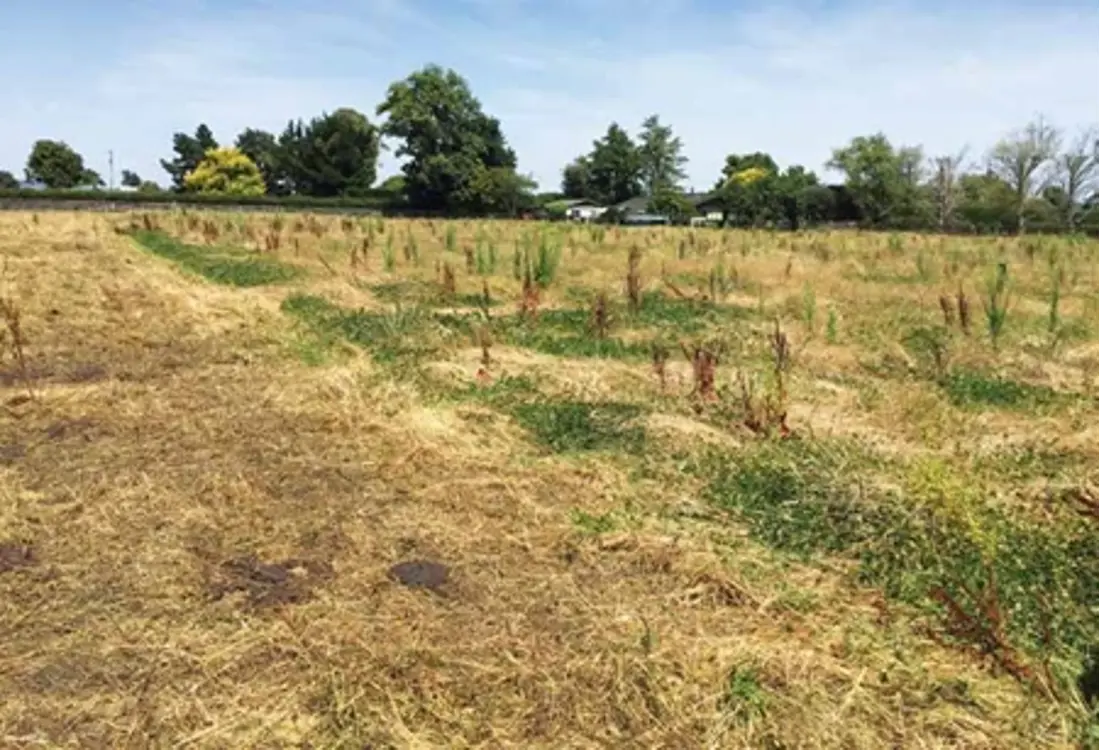
Grazing breakline
The distribution of new seedlings was uniform, filling many of the gaps in between older ryegrass plants. Some bare patches were still evident. Because the newly reseeded pastures after the long deferral were thick and dense, some loss of plants was inevitable as the equilibrium between optimum plant size and density was restored.
With the delay in autumn rain, the newly germinated seed on all the long-deferral paddocks established at the same time, creating a ‘wall of feed’. Pre-graze covers on some of the long-deferral pastures reached 3600 to 4000kg DM/ha, and post-graze covers remained high.
Next season, the Butlers plan to do a grazing earlier in the establishing phase, even if it leads to loss of tillers. Given that deferred paddocks likely received a dump of more than 100kg seed/ha, some tiller loss can be accepted, and the earlier grazing will help get the pastures off to a good start.
Measuring success
The Butlers estimate they reduced their operating costs by about $90/ha, made up of savings on silage conservation, feeding out and machinery maintenance. Although season production was down by about 2%, Ian and Natalie believe most of this loss can be attributed to the dry summer conditions rather than an effect of grazing pasture in-situ.
Positive changes in cow behaviour meant Ian spent less time in the dairy (30 min/day), and more time with his family – they’re intangible benefits but great for morale. Another notable benefit was the increased average pasture cover on non-deferred paddocks, due to the 60-day round. This reduced the stress on plants already suffering from climatic stress.
Pre-graze covers on the rest of the farm were 2000 to 2400kg DM/ha in mid-February, well above the district average. Ian believes this contributed to many paddocks going into winter in better condition, and it helped with building cover for calving.
Weed suppression could be an intangible benefit. Willow weed and buttercup were common in several paddocks pre-deferral, and the couple hope pasture performance on the long-deferral paddocks between August 2020 and January 2021 will reflect improved pasture composition and feed quality.
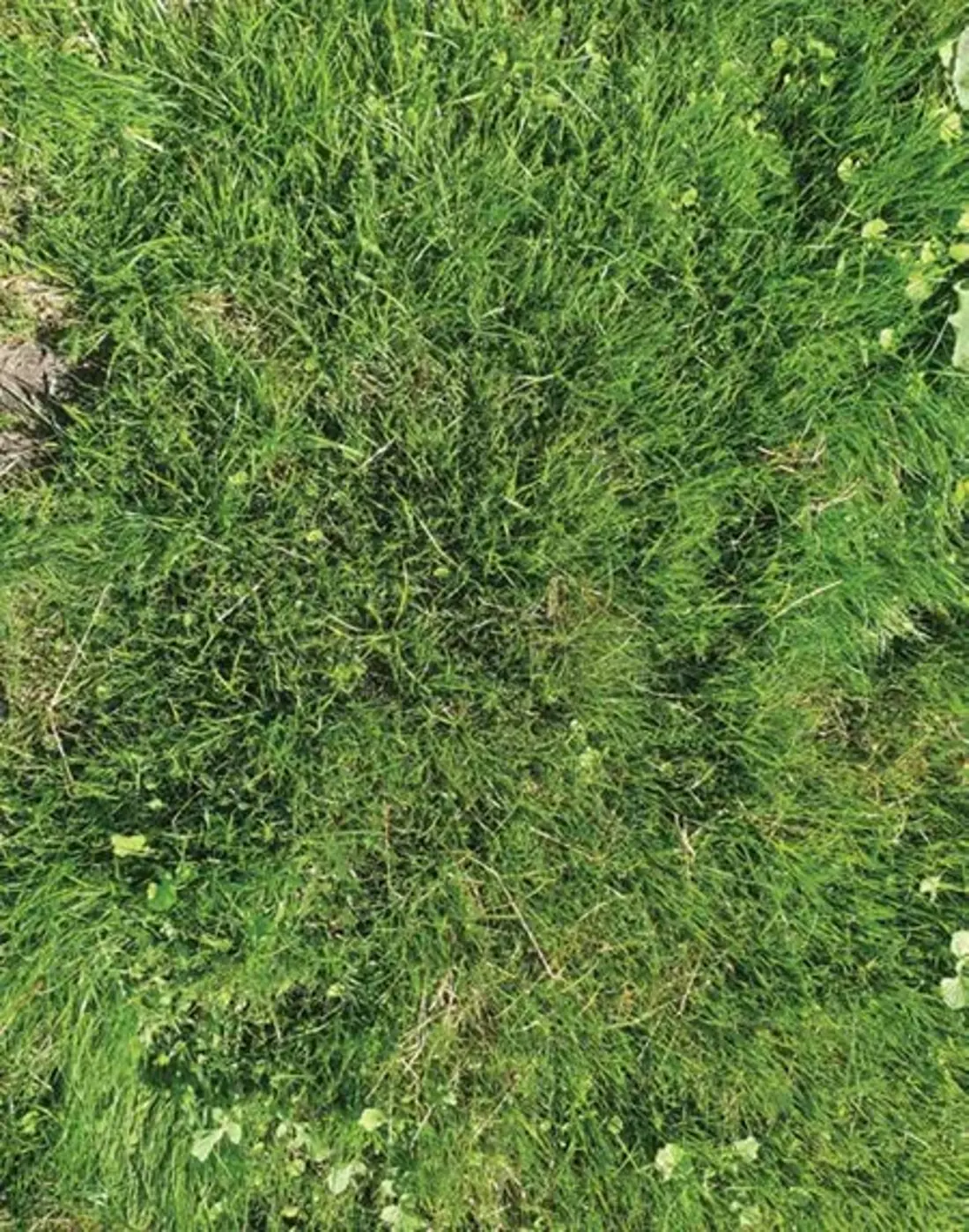
Re seeded pasture on the Butlers farm in April 2020.
Another advantage of pasture deferral, compared to growing a summer crop such as turnips, is that it involves no soil disturbance or soil compaction. The standing mass shaded the soil surface, helping retain soil moisture, which was beneficial to getting an earlier strike of new seedlings with the first sign of rain. “It’s much easier to defer pasture than grow a good summer crop,” says Ian.
What’s next?
Having enjoyed great success with pasture deferral, the Butlers intend to continue with the practice. This season, they’ll be using both the short and long deferral practices. Better-performing paddocks with a surplus will be closed for a short deferral, as the couple are keen to explore how this strategy influences the pre-Christmas feed balance.
The couple will select poor-performing paddocks with a low ryegrass plant density/ground cover (DairyNZ advises a minimum of 20% perennial ryegrass) and close them from mid- to late October for 90 to 120 days. (To avoid re-seeding weeds, DairyNZ advises application of a broadleaf spray on paddocks prior to “It is much easier to defer pasture than grow a good summer crop.” deferral.)
A mixture of short and long deferral gives the couple more options in managing paddocks and reduces pressure on the farm system in grazing a ‘wall of feed’. After a long dry summer, a farm’s feed wedge is usually flat, so it’s crucial to manage feed appropriately at this time.
Ian believes a mix of the two deferral lengths on up to 10% of the farm should provide sufficient feed reserves to avoid conserving silage. Long pasture deferral is probably a better option for low-input farms in summer dry regions. While the Butlers have no plans to conserve any silage, they’ll tweak these plans if it turns out to be a wet summer.
If you’d like to discuss whether pasture deferral is right for your farm, feel free to get in touch your DairyNZ regional team
